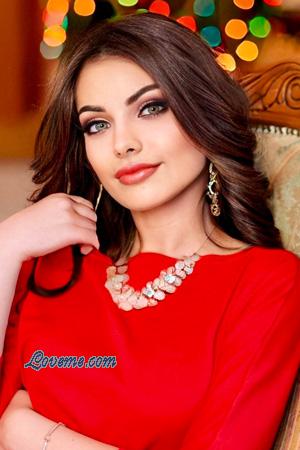 |

SITEMAP
ROMANCE TOURS
INTERNATIONAL DATING
ABOUT RUSSIAN WOMEN
SCAM LIST
HOW AVOID FRAUD
RUSSIAN TRAVEL
DATING ADVICE
DATING SERVICES
SINGLES CRUISES
LANGUAGE COURSES
LEARN RUSSIAN


ABOUT RUSSIA
OUR SERVICES
ABOUT ME
CONTACT ME

|
About Russia
Nations of Russia
The Vods
They call themselves the Vad'yalain. In the 19th -20th centuries the Vods occupied the western part of the modern Leningrad region (the Kingiseppsky area). Now the Vods lives in several villages in a lower reaches of the river Luga.
According to P. Keppen there were 5148 persons of the Vods in 1848. Now there are less than 100 persons on rough estimates. The modern Vods population is descendants of the Northwest group of the Vods. The Vods belong to the East-Baltic type of the big Europeoid race.
The Vodian language belongs to the Finno-Ugric group of the Ural language family. The Vodian language is close to a Northeast dialect of the Estonian language. Now only the elder people know the Vodian language. Language has no writing.
Archeological finds and the linguistics show that the Vods were formed in the first millennium AD when there was a separation of the Vods from the ancient Estonian tribes. The Vods territory was a part of the Novgorod acres. There was the Vods Pyatina as an administrative and territorial unit. At the end of 15th century the Vods territory became a part of the Russian centralized state. In 1943 the Vods together with the rest of the Finnish speaking population from the territory occupied by German armies, were taken out to Finland. On the returning to the USSR in 1944-45 and up to middle of 1950th there were restrictions on the settling in the places of former residence.
There were no schools with teaching in the Vodian language due to small number of the Vods.
In the 18th - 20th centuries the Vods peasants economy was similar to the economy of other ethnic groups of the region (the Russian, the Izhorian, the Ingermanland Finns).
Agriculture was a main occupation of the Vods. They were growing grain (rye, oats, barley) and vegetables (turnip, cabbage); from the 19th century they were growing a potato. The Vods were breeding large horned livestock, sheep, pigs and hens. Near the Gulf of Finland fishery, including ice fishing was common. In search of a job the peasants were leaving for Saint Petersburg or Narva.
The ancient Vods dwelling was similar to the Estonian dwelling. In the 19th century the Vods (as well as the Izhorians, the Ingermanland Finns and the Russians) had a log hut.
In the beginning of 19th century the Vods menswear has lost the ethnospecific features. There were precisely differed clothes of girls, young unmarried women and women. Girls carried a done-up sarafan from a white canvas without sleeves - "Amy" atop of which put on a short jacket - "Ikhad". After the marriage the woman hair were shortly cut, and in the past (up to second half of the 19th century) were shaved off.
Sour rye bread, various porridges (barley, rye), and turnip and from second half of 19th century a potato were the main food of the Vods. Kissels and dairy products (curdled milk, cottage cheese) were common. During the holidays the Vods were cooking pies, flat barley cakes ("Eavako") and meat dishes. The main beverage was a beer.
The Vods are the Orthodox by the religion. For long time there were vestiges of the paganism. In 19th-20th centuries there were vestiges of the natural objects worship.
The Vods could freely choose their conjugal partner. The wedding lamentations were the Vods marriage customs. On the eve of the wedding the bride and the groom made ritual washing in a bath.
The numerous pagan vestiges were common in the funeral ceremonialism. Long time the burial in sacred groves was usual. Tombs might be covered with stones.
In 20th century a small family was the basic form of family.
In the beginning of 20th century specialists in folklore have recorded the wedding and lyrical songs, accompanied by Kantele. Wedding lamentations were common.
NATIONS OF RUSSIA
The Adygy I
The Aguls I
The Akhvakhs I
The Aleuts I
The Altaians I
The Andians nations I
The Andins I
The Archins I
The Armenians I
The Aserbaijanians I
The Assyrians I
The Avars I
The Baghulals I
The Balkarians I
The Baraba Tatars I
The Bashkirs I
The Besermians I
The Bezhtians I
The Botlikhs I
The Bulgarians I
The Buryats I
The Byelorussians I
The Chamalals I
The Chechens I
The Cherkess I
The Chukchis I
The Chuvashs I
The Cossacks I
The Crimean Tatars I
The Dargins I
The Didos I
The Dolgans I
The Enets I
The Eskimos I
The Estonians I
The Evenks I
The Evens I
The Finns I
The Gagauz I
The Georgians I
The Germans I
The Ginukhs I
The Godoberins I
The Greeks I
The Gypsies I
The Hunzibs I
The Ingush I
The Itelmens I
The Izhorians I
The Jews I
The Kabards I
The Kalmyks I
The Karachay I
The Karatas I
The Karelians I
The Kazakhs I
The Kets I
The Khakass I
The Khants I
The Khvarshis I
The Komi-Permyaks I
The Komis I
The Koreans I
The Koryaks I
The Kumuks I
The Kyrgyz I
The Laks I
The Latvians I
The Lezgins I
The Lithuanians I
The Mansis I
The Maris I
The Moldovans I
The Mordvins I
The Mountain Jews I
The Nanais I
The Negidals I
The Nenets I
The Nganasans I
The Nivkhs I
The Nogays I
The Orochis I
The Oroks I
The Ossetians I
The Permyak Komis I
The Poles I
The Russians I
The Rutuls I
The Saams I
The Selkups I
The Shors I
The Small Nations of North I
The Tabasarans I
The Tajiks I
The Tatars I
The Tats I
The Teleuts I
The Tofalars I
The Tsakhurs I
The Turkmens I
The Tyva I
The Udeghes I
The Udmurts I
The Ukrainians I
The Ulchis I
The Uzbeks I
The Veps I
The Vods I
The Yakuts I
The Yukaghirs I
|
[ About Russia ]
[ Listen to the national anthem of Russia ]
[ The State flag ]
[ The State emblem ]
[ Power structure of Russia ]
[ Regions of Russia ]
[ Cities of Russia ]
[ Nations of Russia ]
|
|
|
|
|
|
 |
Singles-Exchange.Net
Russian Bride Guide
In Association with AFA
7320 N Dreamy Draw Drive
Phoenix, Arizona 85020
(602) 553-8178
FAX (602) 468-1119
Contact Us
|
|